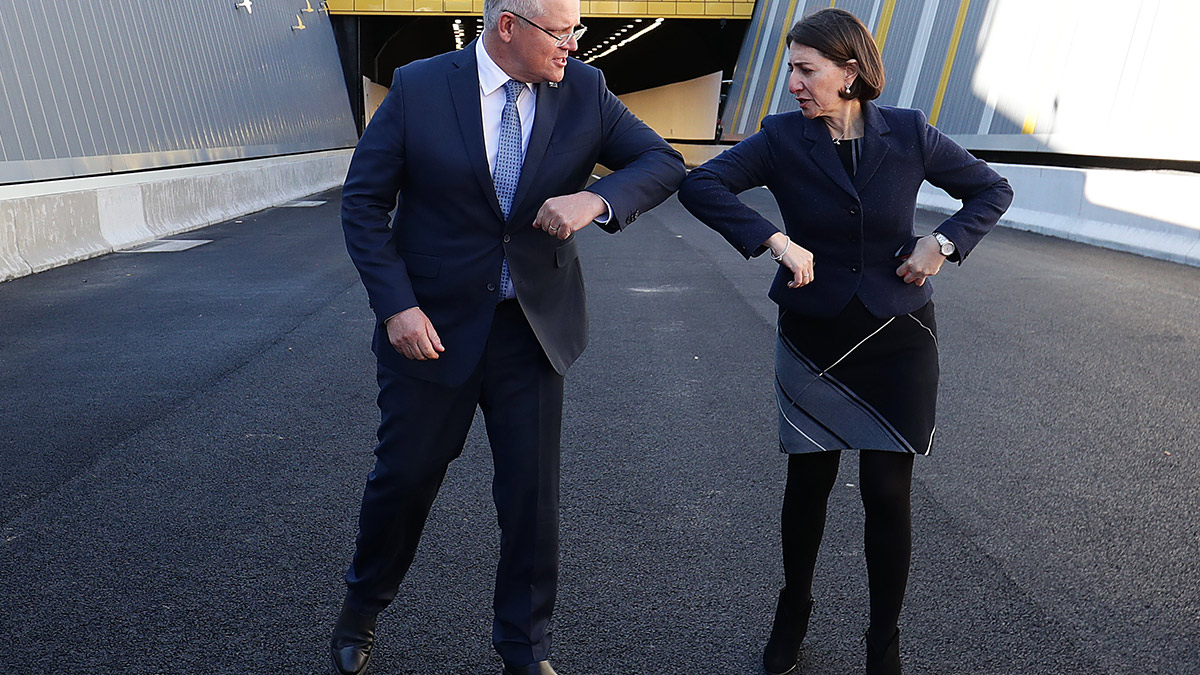T.Rowe Price equities chief says fiscal spending will ‘dominate’ economic recovery efforts

Over to you ScoMo and Gladys. T.Rowe Price says fiscal spending efforts will lead the economic recovery. (Pic: Getty Images)
After a torrid June quarter, the head of Australian equities at fund manager T.Rowe Price has moved to a more defensive position to start the new financial year.
Speaking at a webinar presentation this week, Randal Jenneke said market prices reflect a continued sense of optimism around the economic recovery.
“There’s been plenty of debate around the shape (of the recovery) but I’m pretty confident it’s not going to be a ‘V’. That’s why our earnings outlook is cautious and that’s reflected in the conditioning of our portfolio,” he said.
Jenneke said that at current levels, the price-to-earnings (P/E) ratio of the ASX200 as a whole is now at its highest level in more than 20 years.
“The first reason for that is the market has fallen by around 10 per cent year-to-date, but expected earnings have fallen much faster — closer to 22-23 per cent,” he said.
“So the market is trying to price in recovery, but we’re a bit cautious about buying into that because we think we’re going to see further earnings downgrades. So when we think about positioning it’s the more defensive part of the market.”
Stimulus vs The Pandemic
From a sector perspective, T.Rowe Price is overweight consumer discretionary stocks, as well as healthcare and IT companies.
It’s moved to underweight positions in sectors tied to the business cycle such as financials and real estate companies, which still look “unattractive from a risk-reward perspective”.
“What we’ve seen to this point is that markets have played the story of acceleration and deceleration in overall activity, and I think we’re getting to the end of that story now,” Jenneke said.
“So I think the market’s pinning its hopes on more fiscal stimulus, particularly in US, and I think that’s likely. But the question now is around the battle between further stimulus, and how the virus continues to impact on activity. That will be the key story in the coming weeks and months, and it’s something that we’re watching very closely.”
The case for double-digit unemployment
Turning back to the Australian market, Jenneke says the disruption to labor markets from the pandemic makes it more difficult to calculate a precise figures for actual unemployment
The latest set of official data showed a headline unemployment rate of 7.1 per cent — a level which doesn’t include people who aren’t working but are receiving JobKeeper payments.
In terms of the actual number of people out of work, Jenneke said T.Rowe Price is of the view the real unemployment rate is “actually closer to 14 per cent, and that’s going to be a drag for quite some time”.
“That’s why the issue of the fiscal cliff is so important, and whether or not it gets extended. Now we also have to contend with (a) second wave in Victoria, which makes us more cautious around a market that’s trying to price in a V-shaped recovery.”
Fiscal firepower
Jenneke also weighed in on the outlook for inflation, which has become a talking point among economists in the wake of record stimulus measures carried out by government’s and central banks.
It also plays a key role in the calculation of equity valuations, given inflation’s strong relationship with the outlook for interest rates.
But Jenneke shares a similar view to other experts Stockhead has spoken with — inflation is going nowhere fast.
“This has been a shock to both the supply and demand side for different sectors globally. So it’s going to take quite a while for all of that excess capacity to be worked off,” he said.
“And if you think about the real unemployment rate, that shows you how much slack there is in the labour market. So I think inflation is going to be very subdued for the next few years.”
In that context, he said management of the global economy may be shifting away from the central bank narrative that has dominated markets for the last decade, towards a more government-centric approach.
On the monetary policy side, “the age of central banks managing the economy through interest rates and other measures has pretty much run its course,” Jenneke said.
“Going forward, fiscal is going to dominate. So down the track there’s the prospect of greater inflation if we see a strong fiscal stimulus impulse, but for the next two years we’ll need to soak up the excess capacity that’s going to be in markets.”
“This is a deflationary event that we’re now in. So for next couple of years I think that will lead to a very low inflation environment.”
Related Topics
UNLOCK INSIGHTS
Discover the untold stories of emerging ASX stocks.
Daily news and expert analysis, it's free to subscribe.
By proceeding, you confirm you understand that we handle personal information in accordance with our Privacy Policy.








